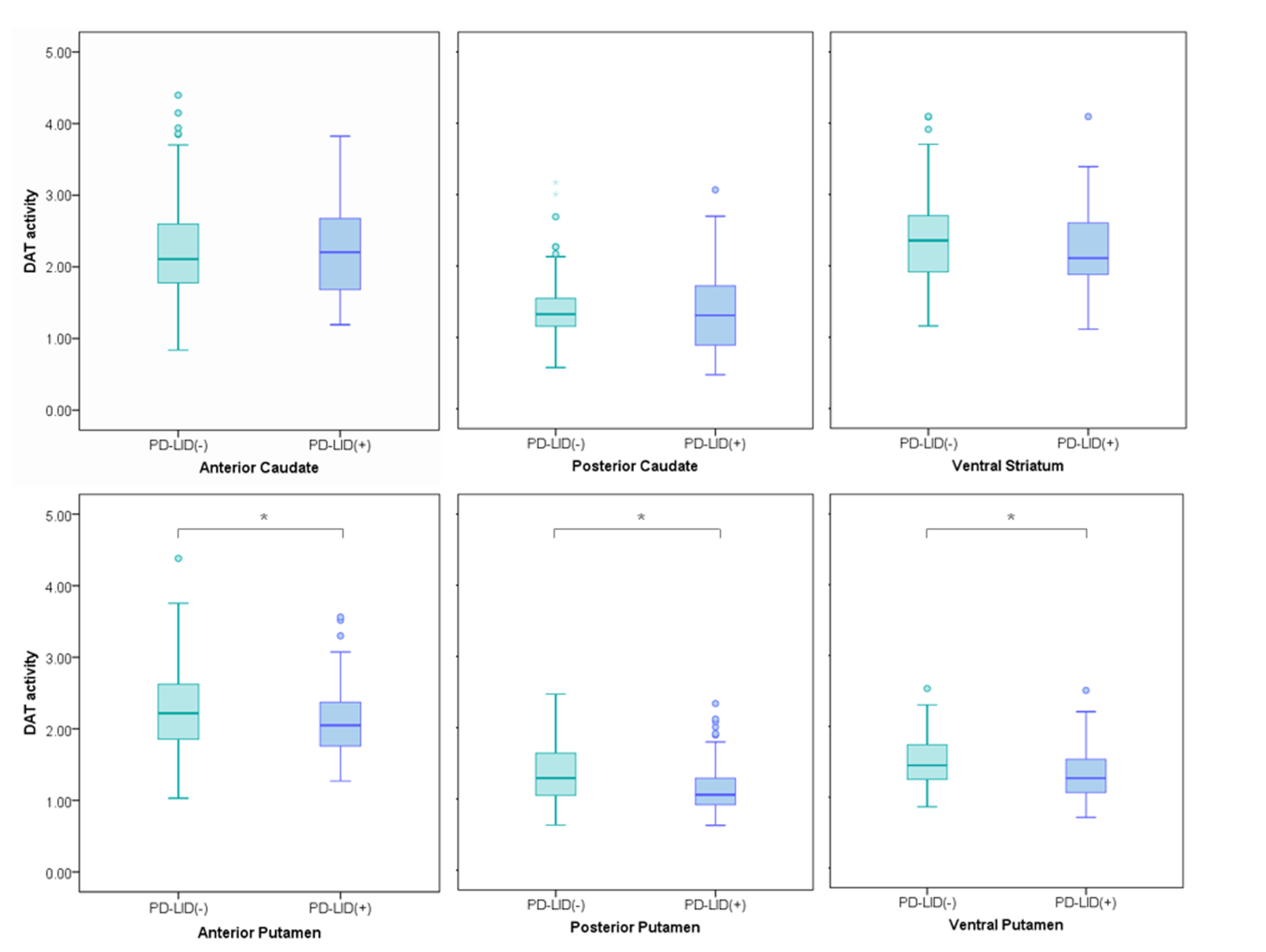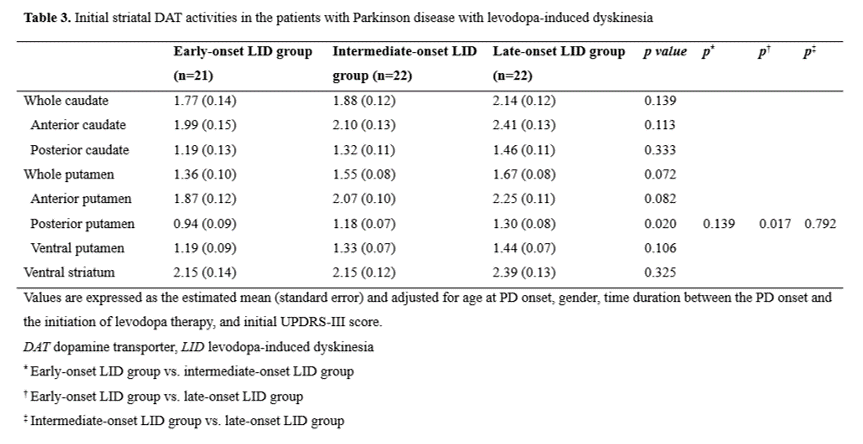Session Information
Date: Monday, October 8, 2018
Session Title: Parkinson's Disease: Neuroimaging And Neurophysiology
Session Time: 1:15pm-2:45pm
Location: Hall 3FG
Objective: To investigated whether dopaminergic function in the nigrostriatal system is associated with the timing of levodopa-induced dyskinesia (LID) onset in Parkinson’s disease (PD).
Background: LID is one of the most debilitating effects of levodopa therapy, and is associated with a poor quality of life and health-related costs. In terms of pathogenesis, two main factors are involved in the development of LID. The first is nigral dopaminergic denervation of the striatum presynaptically, and the second consists of plastic changes in striatal dopaminergic neuron cell signalling that leads to abnormal basal ganglion firing patterns postsynaptically. Striatal dopaminergic depletion is required for the development of LID and predicts LID in patients with PD. Reduced presynaptic dopaminergic activity plays an important role in the development of LID in PD.
Methods: From among 412 drug-naive PD patients who underwent a dopamine transporter (DAT) PET scan during their baseline evaluation, we enrolled 65 patients who developed LID during a follow-up period of > 2years. Based on the time from PD onset, LID was classified as early, intermediate or late onset. We then compared DAT availability in the striatal subregions of the patients in the three groups.
Results: Patients with de novo PD with LID had lower putaminal DAT activity than those without LID [Figure 1]. The demographic characteristics did not differ among the early-onset, intermediate-onset, and late-onset groups except for earlier intervention of levodopa therapy in the early LID onset group (p = 0.001). After adjusting for age at PD onset, gender, timing of levodopa therapy from PD onset, and the severity of PD motor symptoms, DAT activity in the posterior putamen was found to be significantly lower in the early LID onset group than in the late LID onset group (p = 0.017) [Table 1]. Multivariate linear regression analysis showed that low DAT activity in the posterior putamen was significantly associated with the early appearance of LID in the early LID onset group (β = 16.039, p = 0.033).
Conclusions: This study demonstrated that low DAT activity in the posterior putamen at baseline is a major risk factor for the early onset of LID in patients with PD, suggesting that the degree of presynaptic dopaminergic denervation plays an important role in determining the timing of LID onset.
To cite this abstract in AMA style:
HS. Yoo, SJ. Chung, BS. Ye, YH. Sohn, PH. Lee. Presynaptic dopamine depletion determines the timing of levodopa-induced dyskinesia onset in Parkinson’s disease [abstract]. Mov Disord. 2018; 33 (suppl 2). https://www.mdsabstracts.org/abstract/presynaptic-dopamine-depletion-determines-the-timing-of-levodopa-induced-dyskinesia-onset-in-parkinsons-disease/. Accessed December 23, 2025.« Back to 2018 International Congress
MDS Abstracts - https://www.mdsabstracts.org/abstract/presynaptic-dopamine-depletion-determines-the-timing-of-levodopa-induced-dyskinesia-onset-in-parkinsons-disease/


